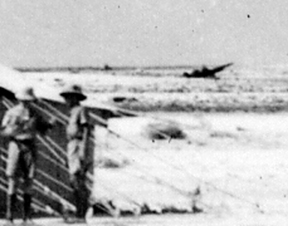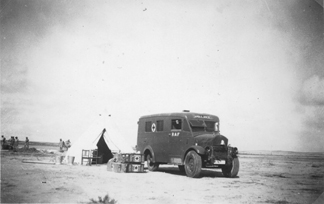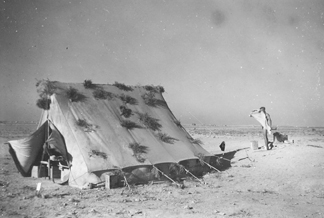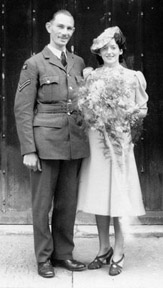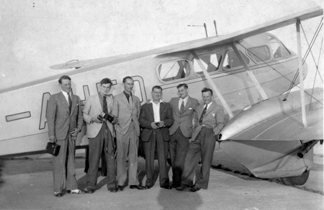 |
 |
||||||||||||||||||||||||||||||||||||||||||||||||||||||||||||||||||||||||||
|
Sergeant Geoffrey Grierson 521699 RAF 1913—1972 Born in March 1913 at Maidenhead. The son of a draper, Geoffrey Grierson was educated at Sir William Borlase's School, Marlow before joining Cooks of St Pauls, a drapery company in the City of London. At the age of 20, Geoff Grierson chose a very different path, joining the RAF in 1933 to take up engineering. Trained as a Flight Mechanic at RAF Henlow, he served at Manston and at Bircham Newton with 206 Squadron on the Avro Anson.
In June 1937 RAF expansion was underway in earnest and Grierson was posted to 211 Squadron just as it was re-forming at RAF Mildenhall, equipped with the Hawker Audax. By now an LAC, he also qualified as an Air Gunner on the Audax. In the days when aircrew (other than the pilot) were not seen as permanent, specialised personnel, his Air Gunner’s winged bullet badge was worth 6d per day extra pay. In September 1937 Geoff moved with 211 Squadron to RAF Grantham, where they were to convert to the Hawker Hind. For such part-time aircrew, normal ground duties still had to be performed in addition to any flying, while messing arrangements for other ranks made no concessions for late arrivals off the flight line. It has often been reported that in the cracking discipline of pre-war permanent RAF stations, senior NCOs commonly regarded the flying duties undertaken by their juniors as a dodge to avoid real work on the ground and acted accordingly. In the wake of the Spanish Civil War and Italian adventures in Abyssinia, international tension was close to boiling point in 1938. In March that year, Barcelona was bombed (by the Italians) and Austria was occupied (by Germany). Tensions with Italy continued to rise in Libya and in Palestine. For Czechoslovakia, the crisis with Germany came in May, followed by the Munich crisis of September. The expanding RAF was already moving to reinforce the Middle East. There 211 Squadron now found themselves posted, sailing with their silver Hinds by ship on 30 April, arriving at Alexandria in Egypt on 10 May 1938, thence by rail to RAF Helwan near Cairo on the same day. Detachment of ‘A’ and ‘B’ Flights to Ramleh in Palestine followed, returning to Helwan later that year. In ‘B’ Flight, LAC Grierson was on hand to photograph many of these events, moving with 211 Squadron to Ismailia, to Helwan and out to the Western Desert, at El Daba. By July 1939, they had re-equipped with the Blenheim Mk I, and GG had accumulated over 200 hours in the air. In September 1940, Geoff Grierson was posted with 211 Squadron to Quotaifya and then to Greece. In the Blenheim’s 3 man crew, the Air Gunner was also Wireless Operator, while the Observer acted as Navigator and Bomb-aimer. From mid-1940 onwards, Observers and WOp/AGs were recognised as the specialists they were. A seasoned serviceman on the ground and in the air, Grierson tried to re-muster as a pilot, but found that he was too old. Perhaps he was also too valuable an engineer to spare in the air, once Observers and WOp/AGs took on their permanent roles. Had he succeeded in remustering as aircrew, he would probably have advanced to Sergeant on the spot. Still, promoted to Corporal and remustered to his basic trade following the Greek campaign, Grierson was one of the lucky ones, finding himself posted first to Egypt and then home to the United Kingdom in 1941. Geoff Grierson subsequently served at RAF Bassingbourne, 11 OTU at Oakley and finally with the Short Stirling major servicing team at North Creake. Promoted Sergeant on posting to 11 OTU, from then on he may then have had little opportunity for taking “forbidden” photographs. His son Michael (Mike) followed his footsteps into the RAF, serving as a Navigator with 57 Squadron on the Handley Page Victor B1 and K1a. He had just requalified on the C130 Hercules with 36 Squadron at RAF Lyneham when in 1974 he was posted to the staff of the Officer Cadet Training Unit (OCTU) at RAF Henlow. There his office was located in a former barrack block that had probably been used by his father in 1933. The narrative above is freely based on material provided by Mike Grierson. When we first got in touch, Mike and Joan had recently moved house: to Blenheim Close, of course. That turned out to be the start of a chain of coincidence (one of the many that bejewel the tale of 211 Squadron) which made creation of this page a delight. Flying summary, LAC G Grierson Hawker Audax Hawker Hind Grantham November 1937 to March 1938 Helwan 1938 Ramleh July to September 1938 Ismailia January to April 39 El Daba: April 39 Bristol Blenheim operations 1939-1940 El Daba August 39 - May 40 Quotaifya November 1940 Ismailia November 1940 The Grierson Albums Geoff Grierson’s photograph collection is rich indeed, and Mike’s scans are of the highest quality. The photographs include a number of pre-War official group shots and a large number of aircraft, station and personnel shots, and wonderful, rarely seen sets of 211 Squadron Audax and Hind operations in the UK and Middle East. The surviving photographs of 211 Squadron airmen invariably include a mixture of their own shots, others taken by mates, and official shots distributed freely around the Squadron. Geoff Grierson had a keen eye for photography and was quite an artist. He would have known the unknown airman: their albums hold many closely related photographs, and some few of each other. A selection of Geoff’s Audax and Hind photographs are to be found on the Squadron Markings, Audax and Hind and Middle East pages. Here, I’ve made a pretty comprehensive presentation of the remainder of his collection, in these groups (with images chronological within group as far as possible): Aircraft miscellany Captions are either as on the image, from Geoff Grierson’s albums, or from my own research. Aircraft miscellany
Audax K3104 leading a No 2 Squadron vic. This aircraft was taken on charge in January 1934 and after a long FTS career went to the SAAF in 1940. The starboard aircraft of the vic is most likely K3062, a 1933 acquisition.
The unknown airman Ernie had another, official, print of this fatal accident. Grim object lessons, these shots. This print, quite battered, I have tidied somewhat for the screen. It is one of a number of closely related shots which suggest that Geoff and Ernie were more than likely nodding acquaintances on 211 Squadron. Not close, perhaps, but known to each other.
Taken on charge 25 July 1936, K6185 survived with 206 at Bircham Newton until 22 April 1939 when a night approach went awry. The aircraft undershot and hit the trees, to be struck off charge 17 May. Geoff served with 206 Squadron before joining 211 Squadron. The capped airman, far left, bears a strong resemblance to other pictures of him and to his grandson. Without doubt Jimmy Higgs, a long time family friend, on the right.
The Wellesley entered RAF service in April 1937. Barnes-Wallis designed the lattice-work geodetic airframe later made famous by the Wellington. Wellesleys served until 1943, mainly with Squadrons based in The Sudan and Egypt. Not a good look here: the aircraft had stalled on landing, collapsing the port undercarriage leg. Repaired on site, though, and returned to service. V-Victor survived two more recorded ground handling accidents to be struck off charge in late June 1941. Squadron badge visible on the tailfin.
A cracking shot beside the hangar at Helwan. In view of the unusually large wingspan of the Wellesleys, to ensure wingtip clearance the ground staff have painted a guide path on the hallowed surface of the parade ground.
Originally built as a Vickers Victoria III in 1926, rebuilt as a Mark V some time before 1929, then converted to Valentia 29 February 1936 at the Aircraft Depot, Aboukir. JR8062 spent a considerable amount of time with 216 Squadron over the years up to 1939, appearing as both Z-Zebra and B-Beer at various dates. In 1942, she was issued to RAF Middle East and then to 70 Squadron, until on a ferry flight to Iraq she was lost following a petrol pump fire on the ground at LG H3 on 19 September 1942.
A small portable sign before the lower wing declares “REAF No 1 Squadron”, and close inspection of the markings shows the Egyptian crescent-and-stars as the central roundel element. The leading aircraft is Hawker Audax K504, that to the rear, K400. These two aircraft served with No 1 (GP) Squadron REAF, based at Almaza. In 1937 the REAF received six Audaxes (K400 to K405) with Armstrong Siddeley Panther VI engines, followed in 1938 by a further 18 Panther X-engined aircraft (K501 to K518). Though relations under the Anglo-Egyptian Treaty were often more than somewhat sultry, the Royal Egyptian Air Force shared responsibility with the RAF for the defence of Egypt, The Sudan and the Canal Zone.
Taken on the same occasion. Given Hawkers predilection to award new type names to seemingly minor variants of the Hart design, it may seem quixotic that this beast could still have been called an Audax, but so it was, despite its handsomely shrouded radial engine in long-chord cowling and large Osprey tail-fin to compensate. To add another layer to the story, in the re-organisation of orders that followed the formation of the Hawker Siddeley Group in 1936, the Egyptian Audax aircraft were actually built by AV Roe and Co and re-designated Avro 674!
A fixture in the Middle East, having been sent out to Ismailia in February 1920, 208 Squadron did much good work in the army co-operation role in the Desert and in Greece. Converting to the Lysander in January 1939, the Squadron also took on some Hurricanes and with this mixed bag took on tactical reconnaissance and ambulance duties too. Here, however, the crosses worn by L4719 are of the kind used to identify the opposing “Red” and “Blue” forces of a pre-war exercise, with the Army co-operation role explaining the purpose of the Smoke Curtain Installation on the undercarriage sub-wings. No Squadron code in evidence. I’m indebted to James Kightly of Mushroom Model Publications for bringing the air exercise markings to my attention. More importantly, the appearance of this aircraft in Geoff’s collection has great significance in the 211 Squadron story. On 15 April 1941 at Kazaklar, two 208 Squadron Lysanders were about to evacuate the two surviving members of 211 Squadron’s disastrous Easter Sunday raid who had succeeded in regaining their own lines after being shot down. Both Lysanders were attacked by Me 109s shortly after taking off. P/O JW Stewart in L4690 with F/Sgt AG James as passenger was shot down almost at once: only Stewart survived. Waymark in L4719 took F/O AC Godfrey as his passenger and rear gunner pro-tem. Under attack by five Me 109s, Godfrey retaliated with the rear cockpit VGO. Losing two fingers under fire, he continued to shoot with his left hand until the aircraft crashed. Now with an injured leg as well, Godfrey escaped the aircraft and subsequent ground strafing with Wymark’s help. Eventually the two were evacuated by car and thence by air to Athens. These events took place somewhere between Kazaklar (modern Ampelonas) and Larissa, 10 miles to the South.
A wonderful, filtered photograph that has brought out the deep sky tone, though shot almost into the sun. K for King’s serial is invisible or not present. The aircraft seems to be in desert camouflage, although that may be the result of the deep yellow filter used to get the sky tone right. The allocated pre-war Squadron code was GA, the A of which is faintly visible forward of the roundel. The aircraft has been fitted with the LSC bomb-rack under the rear fuselage.
M-Monkey, (possibly T2832), having pulled off a pretty fair wheels-up arrival.
Original caption. Front row: present are 15 of the Squadron’s 16 officer pilots at that date, and the four Sergeant pilots. Fifth from the left, P/O P/O RA Couchman, then the Australians P/O Allan Farrington, P/O DG Boehm, and P/O Bill Edwards (all three with the RAAF insignia on their cuff). The CO S/Ldr RJA Ford sits left of centre, between F/Lt DP Barclay OC ‘A’ Flight (left), F/Lt EM Withy OC ‘B’ Flight (right). The fourth Australian of the Squadron, P/O DA Cameron, does not appear to be present. Middle row, centre, immediately beneath the Hind propeller boss: AC1 GL Hoyes, WOp badge on his upper sleeve, flanked by a Corporal (left) and another WOp (right). Two places to the left stands AC2 W Wright.
How does he do it? Third from the left, back row!
Grierson is at the end of the second row down, last on the right. Companion photographs to these two are that of ‘C’ Flight held by the RAAFA Aviation Heritage Museum, shown on the Personnel Rolls page, and GL Hoyes HQ Flight shot.
Undated shot of 211 Squadron personnel at play. The hatless Corporal with arms folded (right rear) is wearing the new uniform and an aircrew roll-neck sweater. This, and the jackets off/long trousers attire of the team suggest a cool morning or late afternoon. The other airmen are in some state of undress with jackets on and ties off. One wears the new fore’n’after cap. The team are in earnest: the third man has just done his knee a bit of no good and abandoned ship. In the background the main hangar at RAF Ismailia.
This shot matches closely with one of three airmen at Ramleh (Joe, Jenks, Self) from the album of the unknown airman. Fourth from the left is the “self” of that photograph and next to him, third from the left, is the unknown airman, whose formal and informal picture appears so often in that collection.
Sgt Pike came to be a long-standing member of the Squadron. Offered a temporary commission, P/O DI Pike was to join the Officer’s Mess on 18 April 1940. In the nature of war service, the pace of change stepped up and on 25 April 1940, Pike found himself posted to 113 Squadron, also operating Blenheims in the Desert. Pike and his crew were shot down and taken captive on 29 June 1940. The two Squadrons shared much experience and many personnel, from Grantham to Greece and beyond.
Original caption. Christmas in Helwan. The bar, of tentlike appearance, is well-decorated with artistic efforts, including Popeye and Olive Oyl. The centre pole advises “No escape this way”. The boys are just starting to look festive: some in singlets, others in tweed jacket and tie, two in uniform, beers at hand. Apart from Allsopp’s, there are many other offerings with vin blanc, Nelson’s Blood, White Horse and Gilbey’s all on the shelf. Prints of this shot were handed around: Wingrove also kept his, along with the menu. Geoff Hoyes also kept a good print of this shot.
Geoff (centre) and two mates in new-style uniforms aboard the troopship bound for Egypt. The boys don’t look too happy, despite the bright sun. In the background, airmen in old-style tunics and caps seem to be hanging on tight, too. Have they had lunch? Or are they dreading it? Oh, how she heaves!
LACs Cairns, Grierson and Steward, Cairo Christmas 1939 (Grierson collection)
Taken at Ismailia in civvies. Not as unusual for a serving airman as you might think, depending on the occasion.
Game for anything! Grierson in the rear cockpit, mid-air. Camera at the ready, he’s tried a shot of himself. Difficult to hold, focus or even hang on to the camera at arm’s length in the slipstream at 150mph or so.
Aboard Lancashire were the airmen of No 80 (F) Squadron, No 113 (B) Squadron, and No 211 (B) Squadron.
The Imperial airship service to India would have made port at Ismailia, had it come to pass. AC R Wingrove and his mates took a closer look.
Original caption.This may be the advance party dispatched to Ramleh on 18 July in a single 216 Squadron Vickers Valentia. 211 Squadron ‘A’ Flight Hinds flew out the same day. Shown here is Valentia F-Freddie, JR9760. The JR serial records that the aircraft, originally a Vickers Victoria, had been rebuilt at the Aircraft Depot Aboukir first as a Mark VI in November 1934 and then in 1936 as a Valentia. The aircraft served in all three incarnations with 216 Squadron at various dates from 1930 before finally being struck off charge in August 1941.
Original caption. The nearest aircraft is Vickers Valentia K3607 P-Pip. The far aircraft is not F-Freddie. With 216 Squadron from March 1938 if not earlier, P-Pip had achieved 960:15 flying hours when struck off charge in May 1939. The remainder of the ‘A’ and ‘B’ Flight personnel have gathered for transport to Ramleh aboard the Valentias of 216 Squadron, three of which were tasked for the main movement on 19 July. ‘B’ Flight also left for Ramleh on this day.
Here K6855, K5457 and K6675 of ‘B’ Flight are ready to go. Grierson’s pilot was Sgt Pike. ‘A’ Flight having safely arrived at Ramleh with the advance party, ‘B’ Flight departed Helwan as ordered on 19 July with the main transport party, arriving safely at Ramleh later that day. The two Flights each took five aircraft, four as Initial Equipment and one as Immediate Reserve. The Squadron groundcrew had to exploit all available equipment to meet this demand, leaving ‘C’ Flight at Helwan restricted to local flying while they erected the Squadron’s remaining IR aircraft to make up the shortfall.
Original caption. A cloudy-bright Egyptian winter’s day with enough breeze, 15 knots or so, to keep the windsock full. A small audience of civilians gathered in the far corner of the parade ground observes the proceedings. The vast main hangar to the right shelters the parade ground from the sand-laden gusts.
An excellent aerial shot of the Giza plateau and its pyramid field, outside Cairo. A favoured subject for RAF cameras in the air, and visiting airmen on the ground.
Undated. Apparently associated by Geoff with the Ramleh move. The open, armed truck acting as afterguard is camouflage-painted and is perhaps of 14 Coy RASC. The shirtless fellow in the back has a free-mounted Lewis at his disposal. There are five other personnel in this enigmatic shot, all apparently in swimming togs. Despite the casualness, the camouflage paint and gun position suggest a later, war-time date. 211 Squadron Hinds, Middle East
Packed into a crate for shipping at the RAF Packing Depot in late March 1938, ex-98 Squadron Hawker Hind K6618 arrived at the Aircraft Depot Aboukir on 5 May 1938 for 211 Squadron. They were promptly railed, in their crates, to Helwan where the Squadron took responsibility for their re-erection. Here the aircraft is aloft in the slings of a crane while the fitters place trestles that will support the fuselage while they re-attach wings, empennage, undercarriage and propeller.
Hand-held camera work from the open gunner’s cockpit was a testing task. Perhaps this shot could have been better, but it was far to good to put aside, then and now. Geoff persisted and got many great results. The Squadron went to the Middle East with 18 aircraft, disposed as three flights each with four aircraft as the Initial Equipment and two as their Immediate Reserve.
A cracking shot. Firmly dated and placed as the Middle East page shows. The leading three aircraft all bear the pre-war AO Squadron code. The second aircraft of the ten in this shot is AO-K. This brief move to their war station, in Squadron markings but uncamouflaged, was in response to the crisis at Munich.
Original caption. On inspection it turned out that this print was laterally reversed, an occasional fault found in prints from negatives, rectified here. The clue was the faint 211 seen reversed on each aircraft. The terrain has some pretty sandy features: pretty clearly somewhere in the Middle East and presumably before October 1938. This may be the deployment of B Flight to Ramleh in late July 1938.
The permanent station, mid view, and beyond it the airfield with its characteristic centre marking. Set among the orchards, it must have been a refreshing change from the sand of Ismailia, Heliopolis and Helwan. However, the 211 Squadron deatchment to Ramleh and Semakh was far from a holiday. Local tensions were so high that offensive policing sorties were carried out during the deployment. Hind K6854 crashed during this police liaison work, while K5456 was recovered from a forced landing at Jerusalem and K5457 returned from a sortie bullet-holed (with Sgt Pike as pilot and Grierson in the rear cockpit). Apart from a deal of photographic and armed reconnaissance, the liaison duties included rapid-response “XX sorties” called on by the Palestine Police and Trans-Jordan Frontier Force, in which pilot Allan Farrington, signaller Geoff Hoyes, gunner JJ Kavanagh DFM and the anonymous Airman were all involved, one way and another. For that work, aircraft stood-to fully-armed (“at readiness”, they would say in 1940), ready to mount an immediate sortie in relief of TJFF convoys in the event of attack by local insurgents. By September, the XX sorties were a frequent occurrence.
Embarrassed at Kolundia, near Jerusalem (and still an airport today). 211 Squadron Hawker Hind K5456 swung on take-off, and ran into some boulders, losing its undercarriage and breaking the propeller. Recovered by the groundcrew and apparently repaired, she was struck off charge as late as October 1939. The aircraft had been sent to the Middle East for 211 Squadorn in May 1938.
The grassed field caught out K6851 on arrival at the start of the Ramleh posting, with a swing on landing then tipping up. The damage to the starboard wing and the upper blade of the Watts propeller can be seen here. Repaired on site. The aircraft was one of the batch of 244 delivered to the RAF between November 1936 and August 1937, joining 211 Squadron in new condition on 12 August 1937. Taken to the Middle East via the packing Depot 17 March 1938 for the Squadron, it arrived at the Aircraft Depot Aboukir on 28 April. K6851 survived until 1939: having been transferred to the Middle East Depot, some damage occurred in October that year, and the aircraft was struck off charge on 4 December.
On the stone wall, centre foreground, lie the remains of a propeller. Below the wall, against the tree, the tangled remains of 211 Squadron Hawker Hind K6854. Despite the carnage, Sgt Smith and his Air Gunner, AC McIntosh 519482 were found to be only slightly injured on admission to hospital. The Unknown Airman also photographed this event: a police liaison message pick-up gone wrong.
RAF Rolls-Royce Silver Ghost armoured car A114 “HMAC Buzzard” and an unidentified companion of No 2 Armoured Car Company. A familiar and necessary part of Middle East RAF work. No. 2 Company (later II Squadron RAF Regiment) formed in April 1922 at Heliopolis, and spent a great deal of time in Palestine and across the river in Trans-Jordan, then mandated British territory. For their work in the Palestine difficulties of 1936 to 1939, the Company was awarded its second Middle East battle honour, their first having been awarded for Transjordan work in 1924.
These last two shots, though anonymous, add much of interest to the story. Clearly same car, same day, they appear to be the only ones where all the "fit" is the same. Note the RAF roundel atop the turret, and the pennant: a troop or squadron command car, surely. The pennant, bonnet ribs, "circle" (perhaps a gas detection patch) and grilled radiator shutters all match the right hand car in the first of these three wonderful images. Presumably the same vehicle, here with Lewis mounted on the Scarff ring in addition to the Vickers in the turret. The unknown Airman also took a shot of the light armour - apparently a different vehicle again, though also carrying a pennant. 211 Squadron Western Desert Days
The scene from the landward side of the station. The main camp developed on this side somewhat closer to the station. The rail line is immediately beyond the line of buildings. There is a fine 1940 shot of the RAF camp in Jim Fryatt’s collection, and an identical print was held by Geoff.
Original title of an undated shot. Apparently unpacking is in progress, the general impression is of a rather temporary arrangement. Perhaps this is the first deployment in October 1940, and matching the preceding shot.
A night flying exercise gone wrong. 211 Squadron carried out a busy training effort that night. While a three-aircraft flight succeeded in its night cross-country to Ismailia and return, the local flying programme was rather less successful. P/O Garrad-Cole’s L1537 was destroyed in a heavy landing though he was unhurt. In L1486, P/O CPR Collier had taken 526462 LAC CE Thomas up for aircrew experience. Having encountered difficulties, they crashed in the attempted landing which followed. Although both were seriously injured, they recovered and survived the war. Photographs of the wreck or its cannibalised remains were kept by a number of other Squadron men: Cooper, Hoyes, Sainsbury, Sharratt and Wingrove.
Geoff, Mick Dudman and Mike Sainsbury all took shots of this event, as did Len Cooper. Geoff dated the night taxiing accident to July. Mick Dudman placed it at Mersa Matruh in May, 70 miles to the west of Daba. Not recorded in the Squadron ORB for this period, the event was noted in the RAF Narrative as occurring in the pre-dawn of 12 June, as 9 aircraft of 211 Squadron prepared to take-off for a mass raid with 45 Squadron and 113 Squadron to attack Tobruk at dawn. While Andy Thomas’ Greyhounds account notes the Blenheim as UQ-B L1481, Gunby & Temple, and Warner later determined it as L1487. The damage is quite minor: both L1481 and L1487 went on to fly numerous sorties with 211 Squadron in the Desert and in Greece. The Bristol Bombay is of 216 Squadron.
On 17 September, 211 Squadron mounted two successful raids in strength against MT concentrations SW of Sidi Barrani, with some success. The second raid took place at night. In the hands of Sgt Hutt, with Sgt V Pollard as Observer and Sgt J Munro as WOp/AG, L6660 undershot on return to Quotafiya at about 2040 hours. The aircraft bounced, hit the COs car and took out a tent, too. Taken the morning after, presumably. The forlorn angle of the aircraft is also plainly visible in the original of the NAAFI shot below. In his album set, Grierson carefully noted the aircraft serial as L6660.
A lucky escape all round, though so briefly remarked in the Squadron Operations Record Book. Sgt Hutt’s fate is not recorded. Munro and Pollard were later lost in Greece, on 211 Squadron operations from Menidi over Valona: Sgt J Munro 638862 KIA 7 December 1940 with P/O GI (“The Airedale”) Jerdein 42312 and Sgt JE (Jimmy) Barber 746793 (Blenheim I L1535). Sgt V “Vic” Pollard 745972 KIA 6 January 1941 with F/O LS “Duke” Delaney 40371 and Sgt TA “Jock” McCord 612781 (Blenheim I L8536).
Original caption. The NAAFI tent, insouciant with desert brush camouflage and outside tables and chairs. And this is after they moved the four miles or so to Quotafiya to avoid the belligerent attentions of the Regia Aeronautica! This shot represents a double stroke of good fortune. It is a near match of ones in the collections of Len Cooper and of Jim Fryatt (down to the placement of the desert brush camouflage), but taken from further away. The original of Grierson’s print is so clear that two Blenheims, virtually invisible here, can be seen at dispersals in the far right background. Better still, just to the right of the tent, the wreckage of a third aircraft can be seen. Reduced here to a dark smudge just on the skyline, its conformation on the original is plain enough to confidently identify it as L6660: see the enlargement below. This offers a reasonable date for the shots: they must be after the 17 September 1940 crash and before the 8 November move to Ismailia.
Original title. Camouflaged with brush, and blowing gang-busters, making LAC Hillman’s wash quite a task. Part of the Squadron moved from Daba to Quotaifiya in August 1939. In July 1940, a site for a new airfield was chosen there by the CO S/Ldr Judge with F/Lt Squire, the squadron MO. Of the several landing grounds in the immediate area, the new site was particularly close to the sea. The whole Squadron took post there from July 1940. All in all, probably Quotafiya, sometime between July and October 1940.
Home once more, Corporal Grierson wasted no time: he and Lorna married at the end of August. The subsequent step-up to Sergeant would have been very welcome. In early 1946 he left the RAF to become an engineer with Perkins Diesels in Peterborough.
Geoff Grierson third from the left. The aircraft is de Havilland DH.89 Dragon Rapide 6 G-AHED, once owned by Marshalls (the Cambridge aviation engineering firm) and later by Hunting Surveys. G-AHED is reportedly held in store at the RAF Museum Reserve Collection at Stafford in Shropshire. A very happy group, with many cameras in evidence. Geoffrey Grierson died in 1972 aged 58. Lorna passed away on 15 December 2004 at the age of 90. Sources Gunby & Temple RAF Bomber Losses in the Mediterranean and Middle East Vol I 1939—1942 (Midland 2006)
www.211squadron.org © D Clark & others 1998—2025 |
||||||||||||||||||||||||||||||||||||||||||||||||||||||||||||||||||||||||||
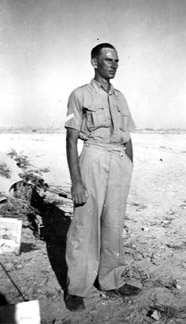
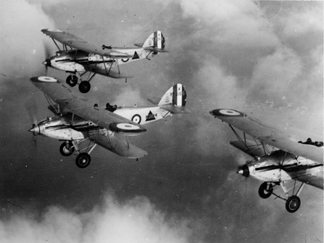
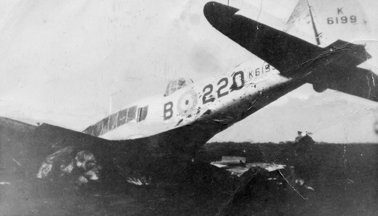
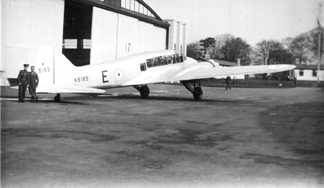
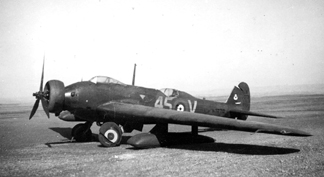
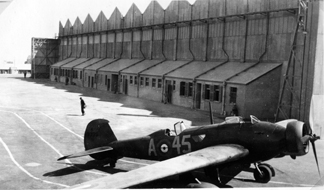
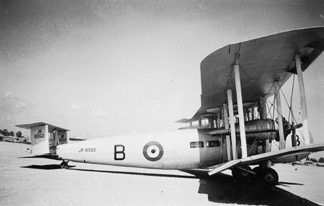
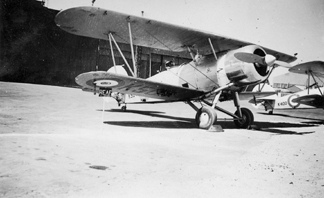
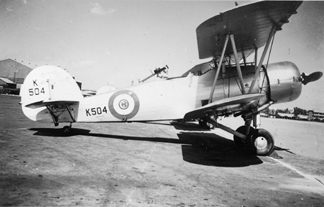
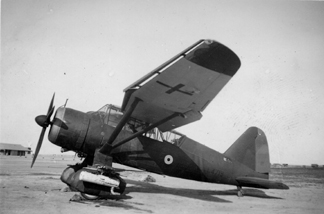
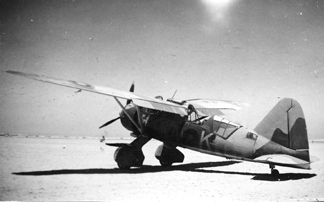
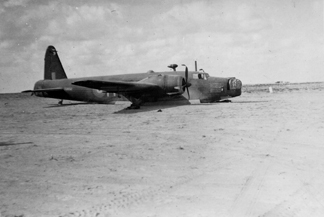



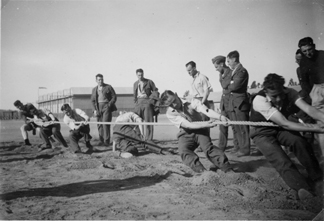
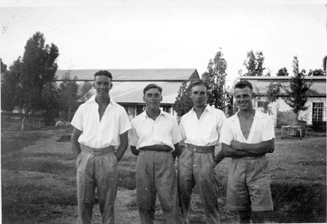
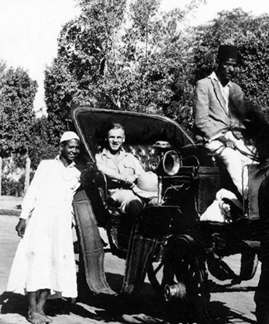
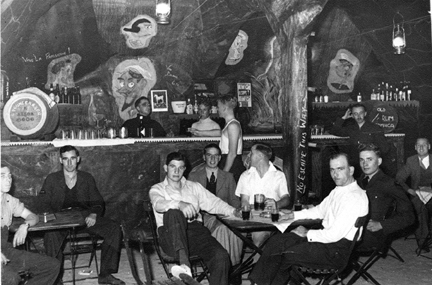
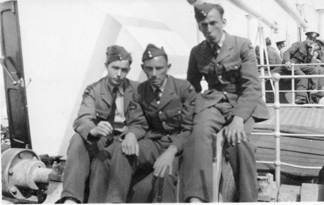

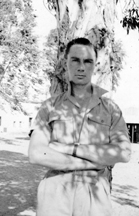
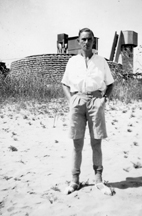

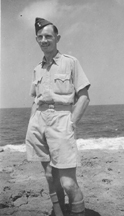
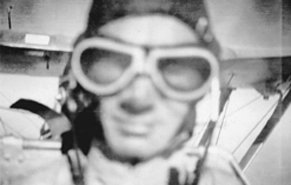
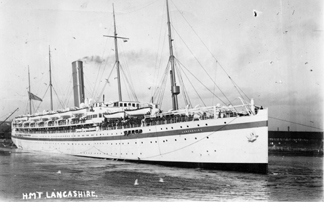

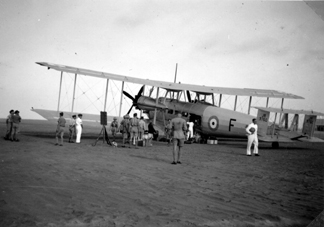

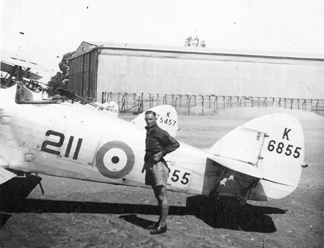
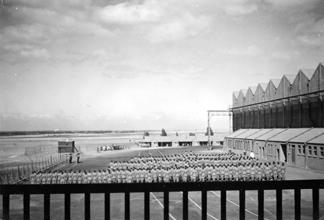
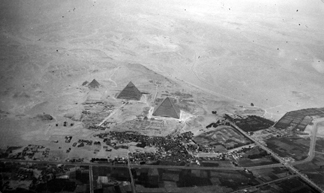
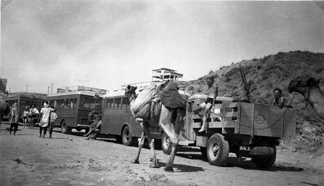
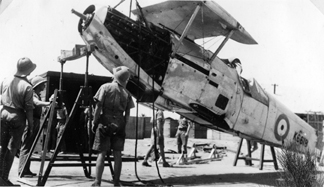
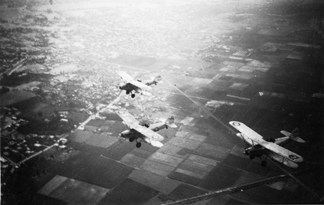

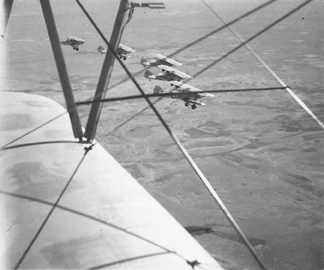
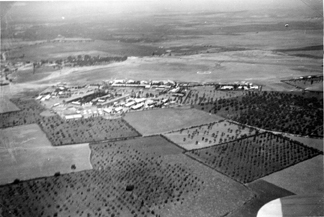
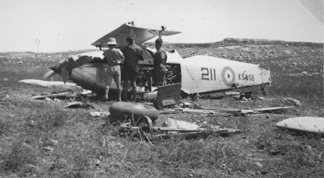
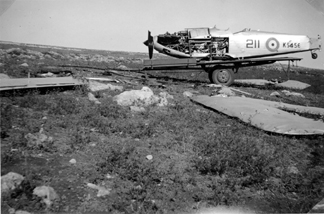
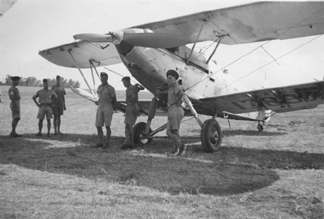
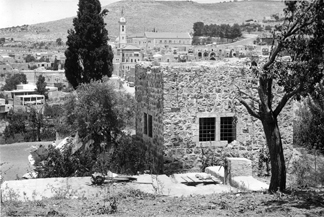
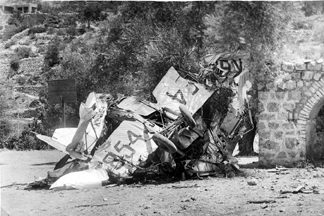
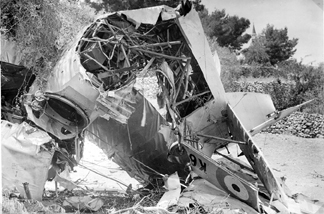

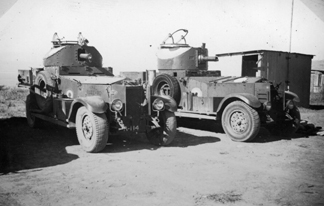
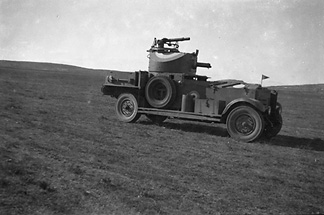
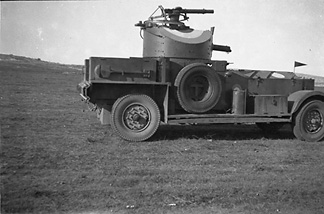
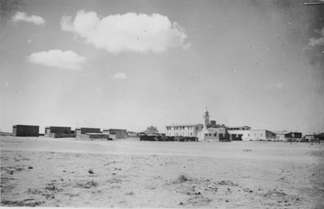
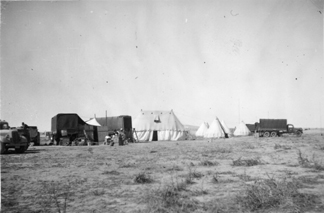
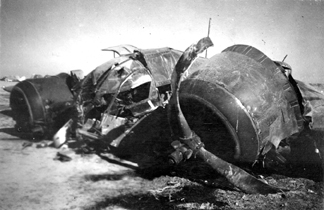
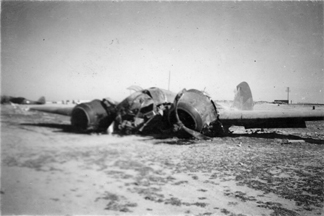
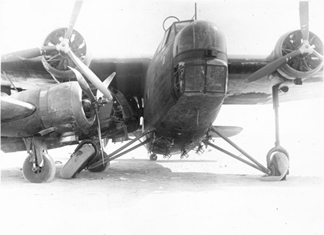
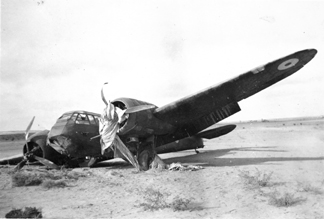
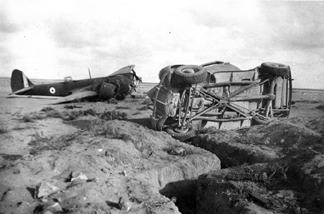
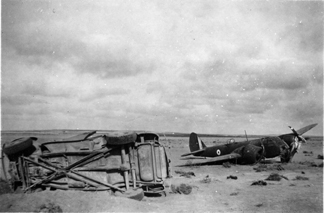
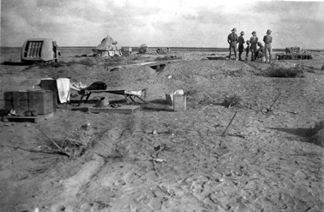
![NAAFI, Quotafiya [ca October 1940] NAAFI, Quotafiya [ca October 1940]](./NAAFI_Quotafiya.jpg)
